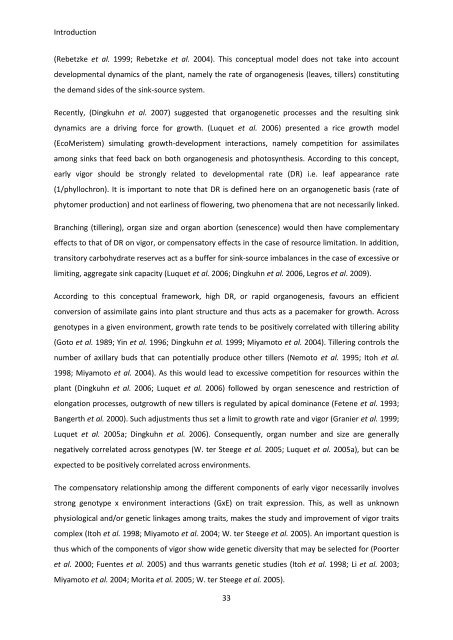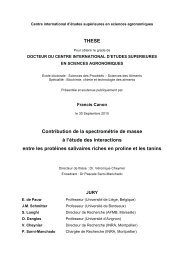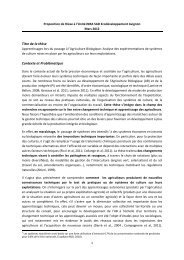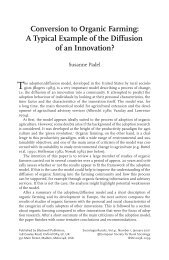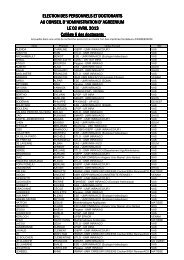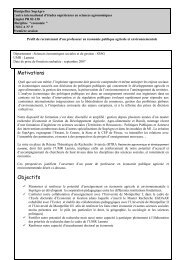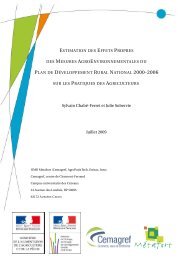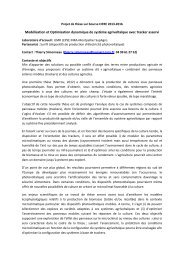Rice (Oryza sativa. L) genetic diversity for early vigor and drought ...
Rice (Oryza sativa. L) genetic diversity for early vigor and drought ...
Rice (Oryza sativa. L) genetic diversity for early vigor and drought ...
- No tags were found...
You also want an ePaper? Increase the reach of your titles
YUMPU automatically turns print PDFs into web optimized ePapers that Google loves.
Introduction(Rebetzke et al. 1999; Rebetzke et al. 2004). This conceptual model does not take into accountdevelopmental dynamics of the plant, namely the rate of organogenesis (leaves, tillers) constitutingthe dem<strong>and</strong> sides of the sink-source system.Recently, (Dingkuhn et al. 2007) suggested that organo<strong>genetic</strong> processes <strong>and</strong> the resulting sinkdynamics are a driving <strong>for</strong>ce <strong>for</strong> growth. (Luquet et al. 2006) presented a rice growth model(EcoMeristem) simulating growth-development interactions, namely competition <strong>for</strong> assimilatesamong sinks that feed back on both organogenesis <strong>and</strong> photosynthesis. According to this concept,<strong>early</strong> <strong>vigor</strong> should be strongly related to developmental rate (DR) i.e. leaf appearance rate(1/phyllochron). It is important to note that DR is defined here on an organo<strong>genetic</strong> basis (rate ofphytomer production) <strong>and</strong> not earliness of flowering, two phenomena that are not necessarily linked.Branching (tillering), organ size <strong>and</strong> organ abortion (senescence) would then have complementaryeffects to that of DR on <strong>vigor</strong>, or compensatory effects in the case of resource limitation. In addition,transitory carbohydrate reserves act as a buffer <strong>for</strong> sink-source imbalances in the case of excessive orlimiting, aggregate sink capacity (Luquet et al. 2006; Dingkuhn et al. 2006, Legros et al. 2009).According to this conceptual framework, high DR, or rapid organogenesis, favours an efficientconversion of assimilate gains into plant structure <strong>and</strong> thus acts as a pacemaker <strong>for</strong> growth. Acrossgenotypes in a given environment, growth rate tends to be positively correlated with tillering ability(Goto et al. 1989; Yin et al. 1996; Dingkuhn et al. 1999; Miyamoto et al. 2004). Tillering controls thenumber of axillary buds that can potentially produce other tillers (Nemoto et al. 1995; Itoh et al.1998; Miyamoto et al. 2004). As this would lead to excessive competition <strong>for</strong> resources within theplant (Dingkuhn et al. 2006; Luquet et al. 2006) followed by organ senescence <strong>and</strong> restriction ofelongation processes, outgrowth of new tillers is regulated by apical dominance (Fetene et al. 1993;Bangerth et al. 2000). Such adjustments thus set a limit to growth rate <strong>and</strong> <strong>vigor</strong> (Granier et al. 1999;Luquet et al. 2005a; Dingkuhn et al. 2006). Consequently, organ number <strong>and</strong> size are generallynegatively correlated across genotypes (W. ter Steege et al. 2005; Luquet et al. 2005a), but can beexpected to be positively correlated across environments.The compensatory relationship among the different components of <strong>early</strong> <strong>vigor</strong> necessarily involvesstrong genotype x environment interactions (GxE) on trait expression. This, as well as unknownphysiological <strong>and</strong>/or <strong>genetic</strong> linkages among traits, makes the study <strong>and</strong> improvement of <strong>vigor</strong> traitscomplex (Itoh et al. 1998; Miyamoto et al. 2004; W. ter Steege et al. 2005). An important question isthus which of the components of <strong>vigor</strong> show wide <strong>genetic</strong> <strong>diversity</strong> that may be selected <strong>for</strong> (Poorteret al. 2000; Fuentes et al. 2005) <strong>and</strong> thus warrants <strong>genetic</strong> studies (Itoh et al. 1998; Li et al. 2003;Miyamoto et al. 2004; Morita et al. 2005; W. ter Steege et al. 2005).33


